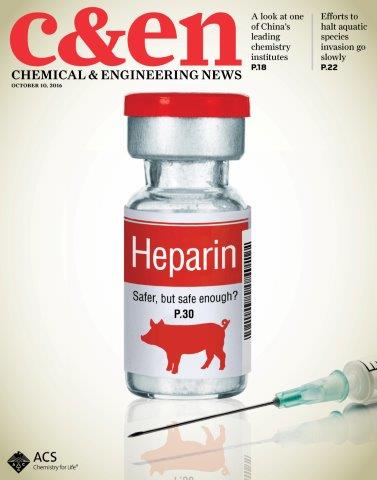FOR IMMEDIATE RELEASE
ACS News Service Weekly PressPac: October 12, 2016
Still wary of heparin from China, U.S. considers options
"Making heparin safe"
Chemical & Engineering News
China’s appetite for pigs fills dinner plates, but it also fills half the world’s orders for heparin, an anticoagulant made from the animals’ intestines. However in 2007 and 2008, adulterated supply from the country was linked to more than 80 deaths in the U.S. A story in Chemical & Engineering News (C&EN), the weekly newsmagazine of the American Chemical Society, explores how regulators and companies are trying to reduce the risk of another such incident.
Jean-François Tremblay, a senior correspondent at C&EN based in Hong Kong, notes that ensuring the safety of heparin is a tall challenge. The drug, which is used in heart surgery, dialysis and for the treatment of deep vein thrombosis, is a highly complex mixture of polysaccharides. Its heterogeneity makes it difficult for testers to determine purity or animal origin. The U.S. currently only allows heparin derived from pigs. Bovine heparin was once an option, but after concerns over mad cow disease arose in the 1990s, it was banned in the U.S.
To try to ensure suppliers in China produce high-quality heparin, tighter controls have been set. The U.S. Food and Drug Administration is making surprise visits to heparin plants in China. There are new tests to verify the animal origins of the drug. And the U.S. Pharmacopeial Convention has outlined new limits for impurities, including the adulterant oversulfated chondroitin sulfate that was used in the heparin scandal 10 years ago. But U.S. legislators and others are still wary of potential “bad apples.” Moving forward, the FDA is considering whether to reintroduce bovine heparin to diversify sources. And researchers are working to develop a synthetic version of the drug.


